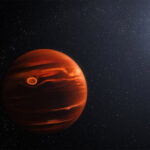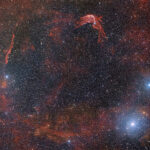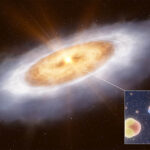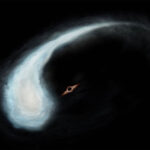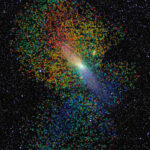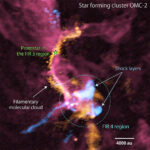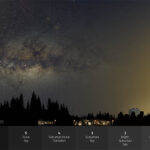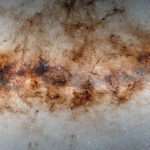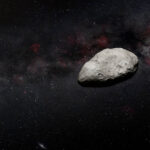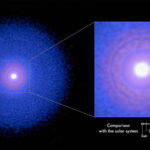Webb spots swirling, gritty clouds on remote planet
Researchers observing with the NASA/ESA/CSA James Webb Space Telescope have pinpointed silicate cloud features in a distant planet’s atmosphere. The atmosphere is constantly rising, mixing, and moving during its 22-hour day, bringing hotter material up and pushing colder material down. The resulting brightness changes are so dramatic that it is…
Blast from the Past!
Behold! the traces of the first-ever supernova recorded in history! A ring of glowing remains of the first-ever recorded supernova, a white dwarf star that exploded more than 1800 years ago. Credit: CTIO/NOIRLab/DOE/NSF/AURA Rector (University of Alaska Anchorage/NSF’s NOIRLab), J. Miller (Gemini Observatory/NSF’s NOIRLab), M. Zamani & D. de Martin (NSF’s NOIRLab).…
Astronomers find missing link for water in the Solar System
Using the Atacama Large Millimeter/submillimeter Array (ALMA), astronomers have detected gaseous water in the planet-forming disc around the star V883 Orionis. This water carries a chemical signature that explains the journey of water from star-forming gas clouds to planets, and supports the idea that water on Earth is even older…
A Bird? A Plane? A Tadpole?
On a sunny day with a blue sky filled with clouds, try stepping out into your garden or go for a walk. Now look at the clouds above. Use your imagination and try to make out as many interesting patterns or shapes that you can see — like a sky…
Surprise Surprise! Stars Moving into Another Galaxy
Life is unpredictable, and you never know when the next exciting adventure comes knocking at your door. Sometimes it might require you to pack your bags and move to another town or a new country altogether. Guess what! You are not alone: stars do it, too! Striking new evidence for…
High – Speed Baby Star Tantrums
Little fights over toys or candies are quite common in human households with siblings. In most cases, parents settle those adorable little disputes by sharing things. It is an entirely different story when the siblings in picture here are two baby stars and their home is a 'star forming cloud’…
Twinkle Twinkle Little Stars, How We Wonder WHERE You Are
Have you ever wondered why only fewer and fewer stars appear in the night sky, especially if you live in a city? A recent study by NOIRLab’s educational project ‘Globe at Night’, shows how light pollution is increasing fast, taking away the majestic view of our starry night sky. This…
Counting A Sky Full Of Stars
Have you tried counting the stars in a clear-night sky? How many bright objects can you identify? The Dark Energy Camera (DECam), built on the Cerro Tololo Inter-American Observatory (CTIO) in Chile, captured the most detailed picture of the galactic plane of our Milky Way as seen from the southern sky. And astronomers…
Webb Detects Extremely Small Main Belt Asteroid
An asteroid roughly the size of Rome’s Colosseum — between 300 to 650 feet (100 to 200 meters) in length — has been detected by an international team of European astronomers using NASA’s James Webb Space Telescope. Their project used data from the calibration of the Mid-InfraRed Instrument (MIRI), in which the…
How to Directly Weigh A Protoplanetary Disk?
What if we could ‘directly’ weigh a planet-forming disk without even visiting one? A group of astronomers from Japan have found a new technique to do so and it turns out to be the best method of all. Observational image of the protoplanetary disk around TW Hydrae showing the distributions of solid…

